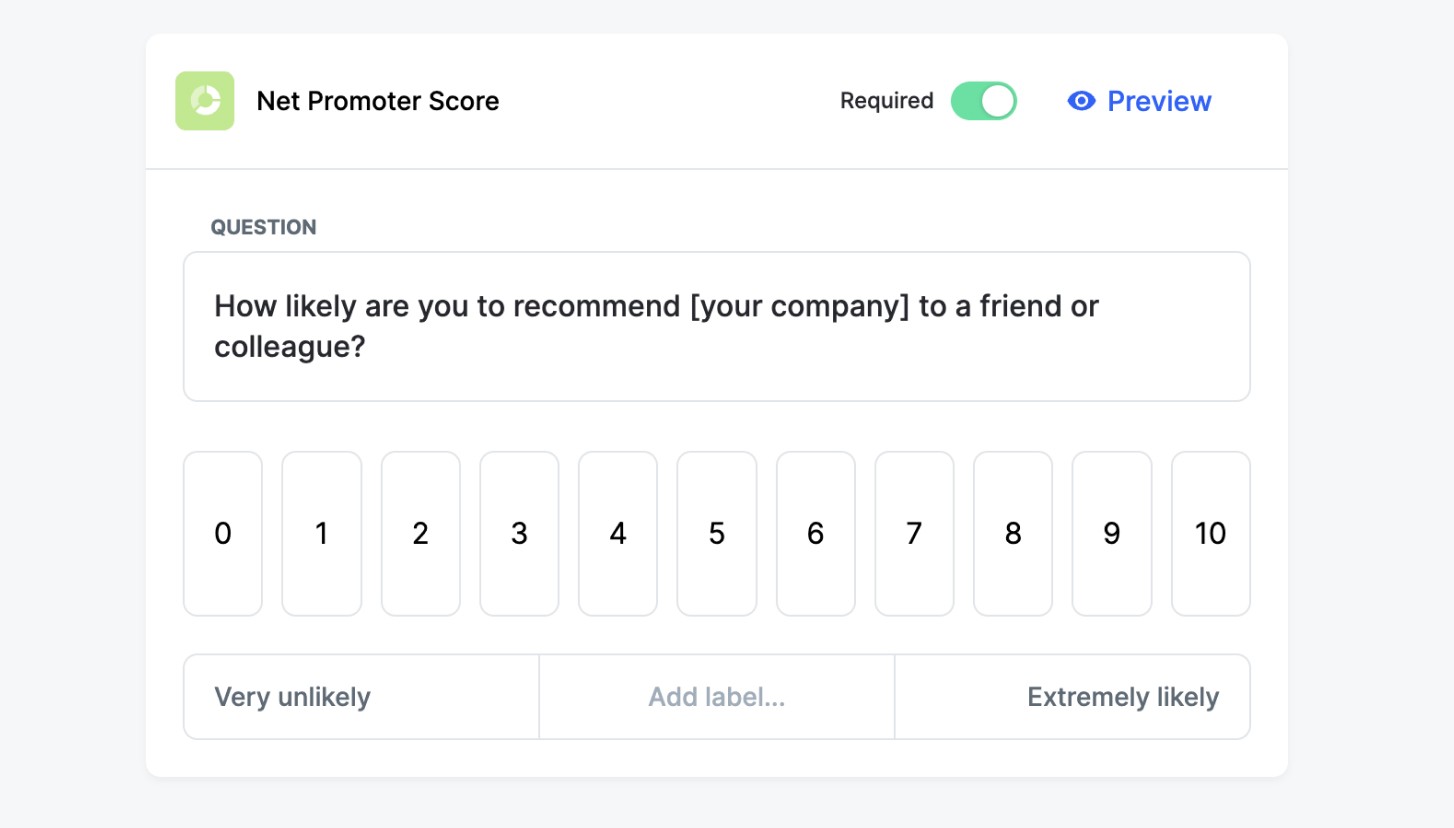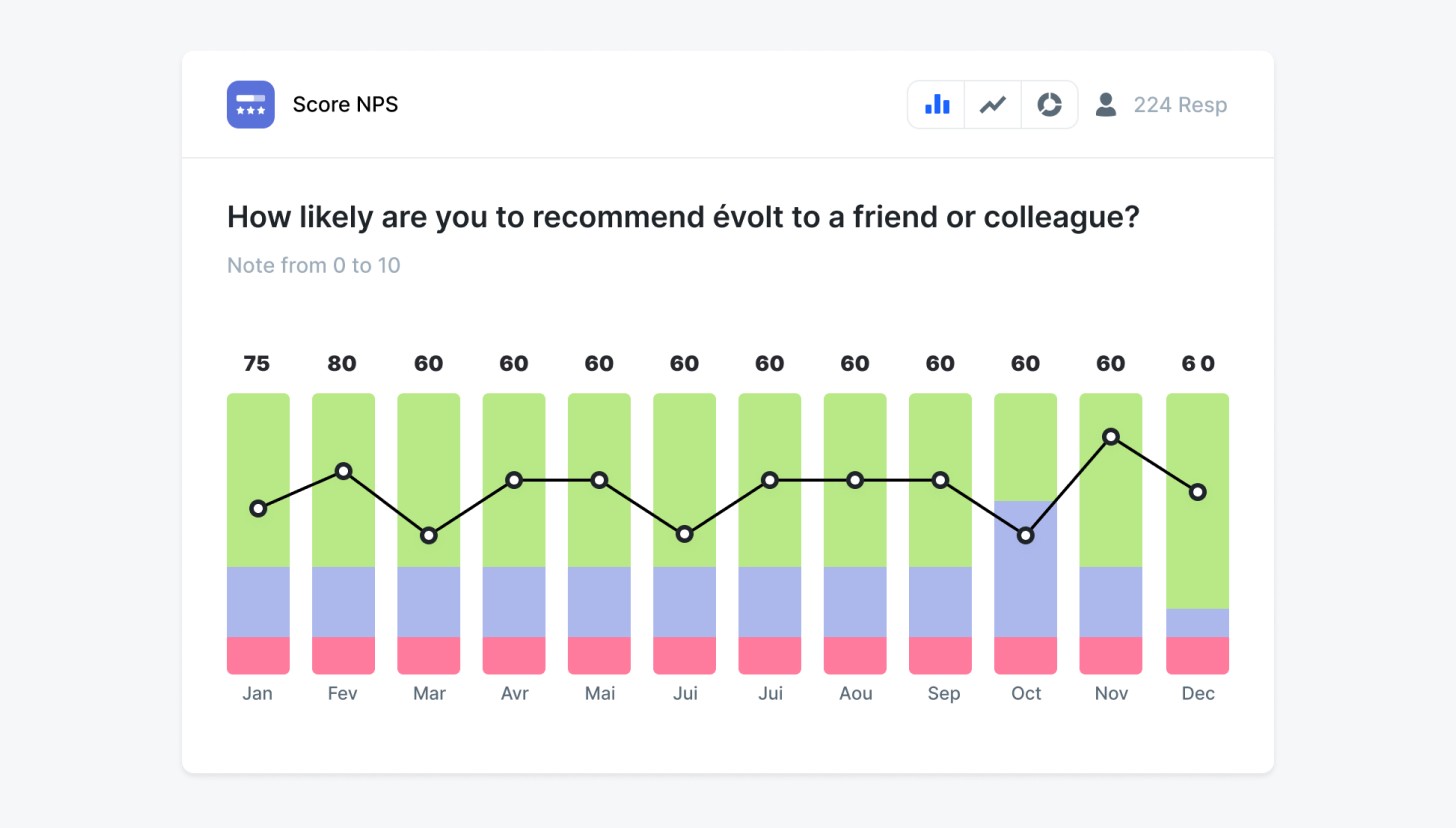The Guide to Understanding NPS Scores: Unlocking the Key to Customer Satisfaction
Customer Satisfaction

Maria Correa
Oct 5, 2023
The Net Promoter Score (NPS) is not only a numerical value but also a robust and multifaceted measurement of customer feedback. It goes beyond a simple rating and offers a comprehensive understanding of customer loyalty. With its transparent and detailed insights, businesses can gain a deeper understanding of their customers' perceptions and feelings.
By capturing and analyzing customer feelings, opinions, and experiences, the NPS provides businesses with invaluable information to measure and evaluate the level of satisfaction and loyalty among their customer base. This enables businesses to make data-driven decisions and implement strategies to enhance customer satisfaction, improve loyalty, and ultimately drive business growth.
The Allure of NPS
The NPS is very popular in business to recollect user impressions just after using your product or service. But it is also liked because of its ease of use and for the profound insights it offers into customer loyalty. Representing more than just a number, it is a metric that connects quantitative data and qualitative customer experiences, creating a bridge of understanding that helps businesses maintain and improve their customer relations.
Here are our top three reasons why you should start using NPS in your data collection strategy using in-app surveys:
Simplicity: In a world full of data, the beauty of NPS is its sheer simplicity. One question, one number. It's straightforward, easy to understand, and even easier to communicate.
Benchmarking: With many businesses adopting NPS, it provides a universal standard. You can compare your NPS with competitors or industry averages, giving you a sense of where you stand.
Actionable Feedback: Behind every score is a story. By following up with customers, especially detractors, you can gain invaluable insights into areas of improvement.
How to ask the NPS question?
The NPS question is the linchpin of the entire NPS system. It asks customers a simple yet powerful question: "On a scale of 0 to 10, how likely are you to recommend our product or service to a friend or colleague?" This single query cuts through the noise and provides a clear measure of customer sentiment.

How to calculate NPS?
The calculation of NPS is a straightforward process that involves categorizing respondents into three groups: Promoters, Passives, and Detractors, based on their responses to the NPS question. Promoters are those who rate your product or service 9 or 10, Passives rate it 7 or 8, and Detractors rate it 0 to 6. Here's the formula:
NPS = % Promoters - % Detractors
This equation provides you with your Net Promoter Score, which can range from -100 (all Detractors) to +100 (all Promoters). Understanding how NPS is calculated is crucial for businesses looking to implement this system effectively.
If you use told, your NPS score is automatically calculated and on top of that, you can visualize your score over time thanks to our various graphs.

Tips for improving your NPS scores
Considering the numerous advantages and potential disadvantages, it is crucial for businesses to carefully evaluate and explore various strategies in order to effectively use an NPS strategy. In light of this, we would like to present our comprehensive and well-researched recommendations that are specifically to assist businesses in achieving success in their NPS endeavors.
Holistic Approach: Use NPS as a starting point. Follow up with qualitative feedback, ensuring you understand the stories behind the scores.
Combine Metrics: Pair NPS with other measures like Customer Satisfaction (CSAT) or Customer Effort Score (CES) to get a well-rounded view of your customer's journey.
Continuous Improvement: Treat NPS as a dynamic entity. Regularly measure, reflect upon the feedback, and adapt. After all, even fairy tales have evolving sequels!
Using NPS to Improve the Customer Experience
We all work around customer experience; in the end, we are nothing without our customers. So, NPS is one of the best tools to help us improve the experience and, at the same time, the loyalty of them. How? By actively listening to our customers and acting upon their feedback, we can foster a sense of loyalty and trust, ensuring that they continue to choose our products and services over our competitors.
Segment and Prioritize Feedback: Not all feedback is created equal. By segmenting feedback based on customer demographics or product usage, companies can prioritize improvements that have the most significant impact.
Close the Feedback Loop: Simply gathering feedback is not sufficient; taking action on it is crucial. keep customers informed about the changes implemented based on their suggestions, or even provide incentives to detractors to give the product or service another opportunity.
Employee Training: Often, feedback will point towards gaps in service or product knowledge. Companies can use this to fine-tune their employee training programs, ensuring that the workforce is well-equipped to handle customer needs.
2 Tools for measuring and analyzing NPS scores
Told
Because we certainly won't start anywhere else ;) Told is a platform allowing you to create survey email and popups for display them in your website / mobile application. We've developed an NPS question, which lets you find out your NPS score and analyze it over time using our different types of graphs. Thanks to our filter system, too, you can see only the responses of detractors, for example, and save time sorting your answers.Retently
Retently is a Customer Experience Management Platform for B2B businesses. So you can create an NPS questionnaire on retently and share it by email or in-app. There's also a report section to analyze responses and save you time.
Conclusion
NPS, also known as Net Promoter Score, is an invaluable tool for businesses to assess customer loyalty. It goes beyond being a mere number or metric and serves as a fundamental starting point to drive improvements in order to achieve unparalleled customer satisfaction. The NPS journey doesn't stop at calculating a score; it marks the beginning of a continuous process of refining strategies and enhancing the overall customer experience.

























